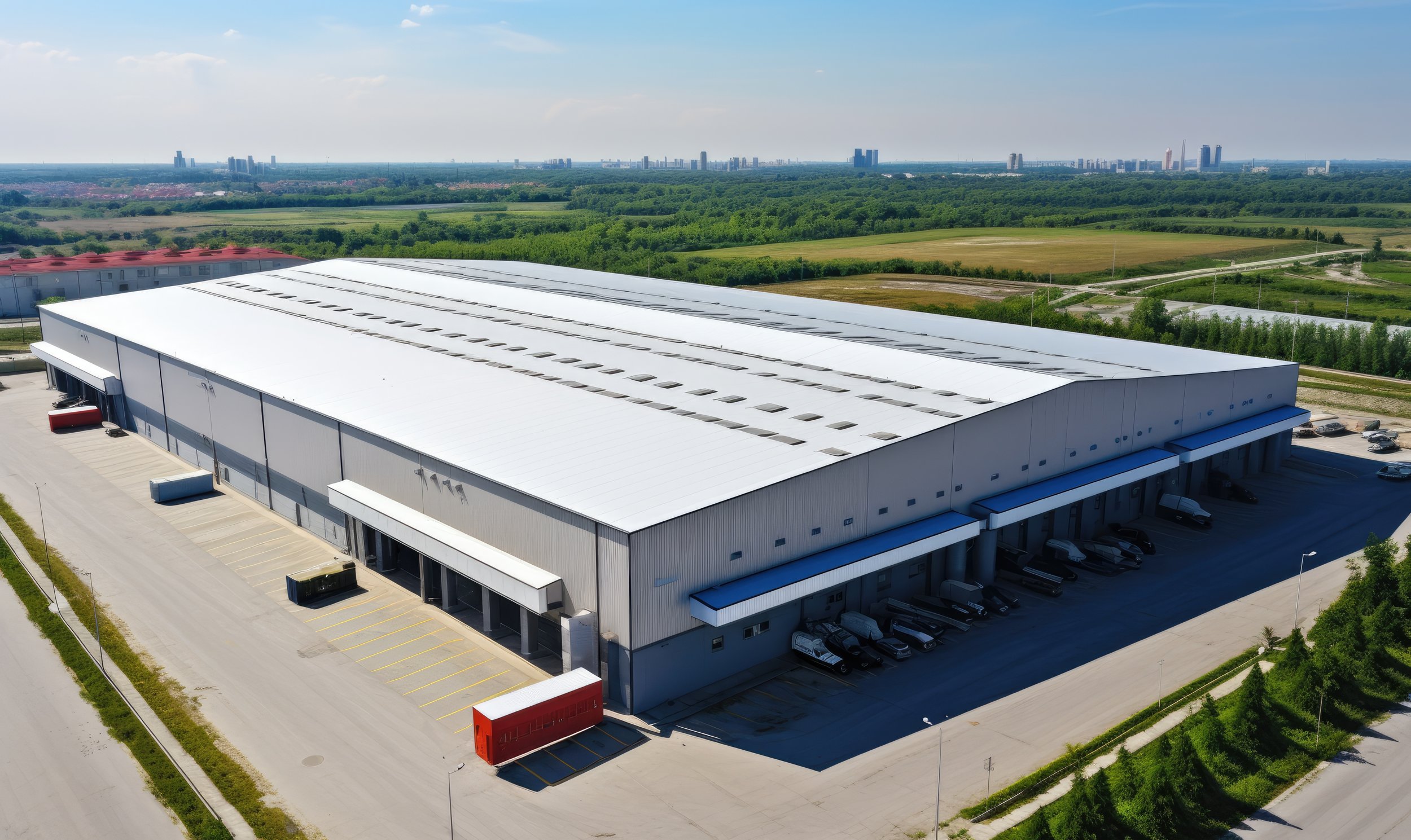
Energy Audits for
Agriculture
Get in Touch
Energy Use in Agriculture
The agriculture sector is energy-intensive, with significant consumption in areas such as irrigation systems, machinery (tractors, combines, etc.), heating for greenhouses, cooling and ventilation for livestock barns, and processing or storage facilities on farms (like grain drying or dairy refrigeration). Much of farming’s energy use comes in the form of liquid fuels (diesel, petrol) for field machinery and transport, and electricity for pumping water and running equipment. Seasonal variability is a major factor – e.g., energy demand for irrigation pumps spikes in dry seasons; greenhouse heating spikes in winter nights. This variability and a dependence on fossil fuels create cost uncertainties for farmers and agricultural businesses, as fuel and electricity prices can fluctuate. Additionally, outdated equipment and energy infrastructure (like old irrigation pumps or inefficient barn heating systems) can lead to inefficiencies and higher operating expenses. Farmers often operate on thin margins, so energy waste directly affects profitability.
However, agriculture also has vast potential for integrating renewable energy solutions. Farms have space for solar panels (barn roofs, fields), produce biomass waste that can be converted to energy, and can utilize geothermal or wind resources in some cases. Embracing these can transform energy usage on farms – turning farms into not just food producers but also energy producers. Moreover, sustainable energy practices align with the growing demand for sustainable farming practices from consumers and regulators.
Opportunities for Energy Efficiency
Energy audits help identify inefficiencies in agricultural operations and recommend strategies to reduce energy usage:
Efficient Equipment Upgrades: Upgrading to energy-efficient equipment is often a direct way to reduce on-farm energy use. For example, replacing an old diesel-powered water pump with a high-efficiency electric pump (potentially powered by on-site solar) can drastically cut fuel costs and maintenance. Upgrading tractors or harvesters to newer models can improve fuel efficiency (modern engines are typically more efficient). Replacing or tuning up old motors on grain augers, feed mixers, or barn ventilation fans to premium efficiency motors can reduce electricity consumption. Even small things like efficient lighting (LEDs) in barns or farm workshops reduce energy and improve conditions for workers/animals.
Optimizing Irrigation Practices: Optimizing irrigation can save both water and energy. Drip irrigation or sprinklers with better targeting use less water than flooding fields, meaning pumps run less. Variable speed drives on irrigation pumps allow the flow to match needs rather than pumping excess water (for example, during germination vs mid-season growth the water needs differ). Using soil moisture sensors and irrigation scheduling (potentially guided by weather forecasts) ensures pumps operate only when necessary, avoiding over-irrigation that wastes water and pumping energy. Many farms have cut irrigation energy by moving to night irrigation when evaporation is lower (so more of the water usage is effective, requiring less total water pumped) and taking advantage of lower night-time electricity rates for pumping if on-grid.
Renewable Energy Integration: Farms can integrate renewable energy in various forms. Installing solar panels on barn roofs or unused land can generate electricity to run farm operations (like powering water pumps, electric fences, cooling systems for produce, etc.). Solar is particularly attractive for remote water pumping (solar-powered pumps for livestock wells or remote irrigation – avoiding diesel generator use or long power line runs). Biomass utilization is another big opportunity: agricultural waste (crop residues, manure) can be used in biomass boilers or digesters. For instance, dairy farms implement biogas digesters that turn cow manure into methane which can fuel generators or heat water – simultaneously managing waste and producing energy. Crop farms can use leftover straw or husks in a biomass boiler for grain drying or heating greenhouses. Geothermal heat pumps can efficiently heat greenhouses or farm buildings by leveraging stable ground temperatures (using much less energy than direct electric or fuel heating).
Energy Storage and Management: Because farms often have intermittent energy usage (and generation if using renewables), energy storage can play a role. Battery systems can store midday solar power to run irrigation at sunset or to provide power at night for things like electric fences or lighting. Thermal storage (like insulated hot water tanks) can store heat from solar thermal collectors for use in pasteurization or washing equipment after sunset. On-grid farms with time-of-use rates might use batteries to manage peak demand (e.g., running grain dryers in late afternoon from battery instead of grid to avoid high rates). Additionally, a farm can manage loads via a simple EMS: for example, staggering the operation of a well pump and a grain dryer so they don’t cause a huge concurrent spike, or scheduling electric vehicle (EV) or equipment charging (if the farm has electric ATVs, tractors, or farm trucks) during times of surplus renewable generation.
Vehicle and Field Operation Efficiency: Many energy-saving strategies on farms involve field operations. For instance, adopting precision agriculture techniques (GPS-guided tractors, variable rate technology for seeding/fertilizer) can reduce passes over the field and thus save fuel. No-till or reduced tillage farming cuts down on tractor runs and the associated diesel use. Keeping farm vehicles and machinery well-maintained (clean air filters, correct tire pressure, sharp blades) improves their fuel efficiency. There’s also emerging interest in electric tractors and machinery for small to mid-sized tasks; while still early, as these become available, they can be powered by farm-generated renewable electricity, greatly cutting fuel dependency.
Building Efficiency (Barns/Greenhouses): On the farmstead, improving the efficiency of structures saves energy. For livestock barns, adding insulation and improving ventilation fans (with VFDs and thermostats) keeps animals comfortable with less energy. Using LED lighting on timers can provide animals with proper lighting cycles at minimal energy cost. In greenhouses, energy curtains (thermal screens that cover plants at night to retain heat) and better insulation or double-glazing can significantly reduce heating energy. Strategic use of natural ventilation and fans can reduce or eliminate mechanical cooling in some seasons. Aquaculture farms can similarly benefit: e.g., using heat pumps instead of resistive heaters for fish tanks, or optimizing aeration pumps with controls. Each farm type has niche improvements – an audit tailors recommendations accordingly.
Implementing these strategies can significantly lower costs. Many of these measures also have resilience benefits – e.g., solar+battery can keep a well pump running during grid outages, which is crucial for livestock; efficient drip irrigation can conserve water in drought conditions.
Farmers have historically been innovators and stewards of the land; adopting energy efficiency and renewables is a modern extension of that stewardship, reducing reliance on external inputs (like fuel or grid power) and increasing self-sufficiency.
How Energy Audits Can Help Agriculture
An energy audit in the agricultural context analyzes energy consumption patterns, identifies cost-saving opportunities, and recommends renewable energy integrations to boost efficiency and sustainability. When we conduct an energy audit for a farm or agribusiness:
Whole-Farm Assessment: We gather data on all energy sources – electricity bills, fuel logs (diesel, gasoline, propane usage), etc. We look at seasonal highs and lows. For example, a pivot irrigation might cause a big electricity spike in summer – we quantify that. Or diesel usage might be mapped to field operations; we assess what activities use the most.
Field Equipment & Practices: We review how and when equipment is used. Are tractors appropriately sized for tasks (oversized tractors burn more fuel per task)? Is there unnecessary idling? We also look at logistics: are there inefficiencies like hauling water long distances (could a pipeline or relocating a well save fuel?), or making multiple redundant passes in fields. If the farmer has data, we analyze yield versus input which sometimes shows if maybe pumps are overwatering (wasting water and energy without yield gain).
Infrastructure Check: We inspect farm infrastructure: irrigation pumps (checking if they are modern and if not, what efficiency gains a new one would give), barns and greenhouses (noting insulation, seeing if thermostats are set correctly or if heaters run when not needed), grain dryers (are they running on optimal schedules, is exhaust heat recovered?), dairy refrigeration (are milk cooling tanks properly functioning, could cooling be done at night with a chiller plus ice bank?), and so on for the specific operations of the farm.
Opportunities for Renewables: We evaluate the site for renewables. How much solar could the farm host (roof or ground)? Is there a water flow or elevation that could allow micro-hydro? Does the farm produce waste that a biogas system could use? We consider the reliability of energy – maybe a farm wants to reduce generator use, so a solar+battery system might be sized to cover critical loads through typical outages. We provide rough designs or at least potential system sizes and outputs in our recommendations, along with available grants or incentives (since many governments have programs to encourage renewable energy on farms).
Financial Analysis & Recommendations: We present the farmer with a clear set of actions, broken down by cost and benefit. For instance: “If you replace your diesel irrigation pump with an electric VFD pump and a 15 kW solar array, you will save $X per year in diesel and maintenance, with a payback of Y years (with subsidy Z accounted for).” Or “Adding insulation to your poultry barn can save you about 30% on heating fuel in winter, improving bird comfort; cost is low and payback is two seasons.” We prioritize measures that give quick wins or solve pressing problems (like unreliable water supply or high fuel costs).
By partnering with us, farmers and agricultural businesses can reduce their energy footprint, cut costs, and achieve a greener future while maintaining productivity. In many cases, energy efficiency aligns with improved productivity: e.g., better irrigation scheduling not only saves energy but often results in healthier crops with less water stress (so potentially better yields). Better barn climate control can improve animal health and growth while saving energy.
Our approach also respects that farms can be cash-strapped; we often suggest phased approaches (do low-cost stuff now, plan for a solar install after next harvest’s revenue, etc.). We also identify if there are loans, rebates, or technical assistance programs from agricultural extension services or others to help implement recommendations.
After implementing audit suggestions, farmers often report that operations become smoother. For example, a farmer who switched to an electric irrigation pump with solar now has water when he needs it without worrying about diesel deliveries or engine breakdowns, and his water cost per acre-foot pumped dropped dramatically (since solar is essentially free after install). Or a greenhouse that added energy curtains finds fuel bills are slashed and plants are actually growing better due to more stable night temperatures.
These success stories also often spread peer-to-peer in farming communities – one farm’s audit can inspire neighbors to think about their own energy usage. In this way, agricultural energy audits can have a ripple effect, promoting more sustainable farming in the region.
Small Family Farms (SMEs): We work with smallholders and family-run farms to find low-cost improvements that match their scale. Perhaps a small farm can’t invest in a big solar array, but we might recommend a solar water pump kit for remote pasture watering (so they don’t need to run a gasoline pump or haul water). Or we might find their old second-hand freezer for farm produce is a huge energy hog – replacing it with a modern efficient model will actually pay itself off in energy savings. These targeted tips can make a meaningful difference in expenses for a small operation, improving the farm’s viability.
Government & Community Agricultural Projects: Agricultural colleges, research farms, or community-run cooperatives benefit from audits to set an example. For instance, an agricultural research station might implement a range of sustainable tech – solar panels, wind turbine, biodigesters – not only to save money but to serve as a demonstration site for farmers. We audit these with an eye toward education as well: recommending projects that have practical value and showcase replicable ideas. Community irrigation schemes (run by cooperative boards or councils) also benefit: an audit might suggest upgrading canal pumps, or lining canals to reduce losses (saving pumping energy and water), and coordinating irrigation times among farmers to flatten peaks (avoiding having to run every pump at once). These improvements improve equity and reliability of water for the community while saving energy.
Large Agribusiness Enterprises: Big corporate farms and agribusiness companies (be it large corporate orchards/vineyards, multinational grain companies, or vertically integrated livestock companies) have more capital and a broader perspective. We provide detailed audits and also strategic advice – for example, a big citrus grower with multiple orchards might invest in a biogas plant to digest fruit waste from a processing facility and produce power for cold storage across the operation. Or a large poultry company might use our audit to justify retrofitting all its contract growers’ barns with LED lighting and better insulation (sometimes financing those improvements and recouping via shared savings). We often coordinate with their sustainability officers or operations directors, tying our energy recommendations to the company’s KPIs (like reducing CO₂ per ton of crop or per animal). These companies might also be looking to brand their products as sustainable – so the audit might identify, say, that switching to renewable energy would allow them to label their produce as grown with X% solar power, which can be a market differentiator. Economies of scale allow these enterprises to do bigger projects: we might recommend a central solar farm to supply multiple sites via private wires or a PPA arrangement, for instance. The outcome is that these corporations can substantially cut energy costs (which, at their scale, could mean saving hundreds of thousands or millions annually) and significantly reduce their overall environmental footprint, which is increasingly scrutinized by consumers, investors, and supply chain partners (like grocery chains requiring lower-carbon products).
By providing a clear plan with our audits, we enable these agribusinesses to systematically implement changes across all their operations, reinforcing their reputation as modern, sustainable, and efficient food producers. This ultimately contributes to a more resilient agriculture sector, better prepared to face future challenges ranging from energy price volatility to climate change impacts.
Industries Served













